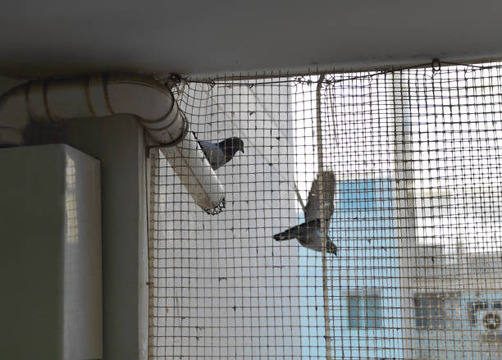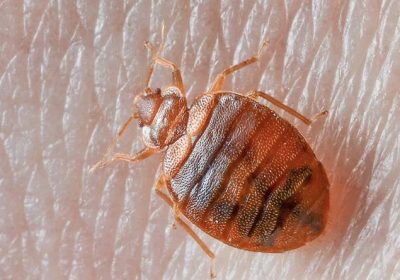Common Mistakes to Avoid When Installing Bird Netting
Birds can be delightful creatures, adding beauty and life to our surroundings. However, they can also become pests, especially when they invade spaces like gardens, vineyards, or industrial areas. Bird netting is a popular and effective solution to keep these feathered friends at bay. But, like any other solution, it comes with its set of challenges. In this article, we’ll explore the common mistakes people make when installing bird netting and how to avoid them.
Mistake 1: Choosing the Wrong Type of Netting
Explanation of Different Types of Bird Netting
Not all bird netting is created equal. There are several types, each designed for specific uses:
- Heavy-Duty Netting: Ideal for larger birds like pigeons and seagulls.
- Light-Duty Netting: Suitable for smaller birds such as sparrows.
- Specific Bird Netting: Tailored for particular bird species, such as starlings or swallows.

Consequences of Using Inappropriate Netting
Using the wrong type of netting can lead to numerous problems. For instance, heavy-duty netting might be overkill for small birds and can be more expensive. On the other hand, light-duty netting might not withstand the strength and persistence of larger birds, leading to tears and gaps.
Tips for Selecting the Right Netting
- Identify the Bird Species: Know which birds you’re targeting.
- Assess the Area: Consider the size and layout of the area to be covered.
- Consult Experts: Seek advice from pest control professionals or suppliers.
Mistake 2: Incorrect Measurements
Importance of Accurate Measurements Before Purchasing Netting
Imagine buying a beautiful carpet for your living room without measuring the space. Frustrating, right? The same applies to bird netting. Accurate measurements are crucial to ensure full coverage and avoid wastage.
Common Measurement Errors
- Underestimating the Area: Not accounting for the entire space, including overhangs and edges.
- Ignoring Three-Dimensional Spaces: Not considering height and depth, especially in complex structures.
Methods for Accurate Measurement
- Use a Measuring Tape: Measure length, width, and height accurately.
- Include Buffer Zones: Add extra length to account for overlaps and securing points.
- Sketch the Area: Create a detailed plan of the area to visualize the coverage needed.
Mistake 3: Inadequate Support Structure
Importance of a Strong Support Structure
Think of your bird netting as a tent. Without sturdy poles, the tent would collapse. Similarly, a strong support structure is essential to keep the netting taut and effective.
Common Structural Issues
- Sagging: Caused by weak support, leading to gaps where birds can enter.
- Lack of Tension: Loose netting is easily bypassed or damaged by birds.
Tips for Creating a Reliable Support Framework
- Use Appropriate Poles: Choose sturdy materials like metal or treated wood.
- Tensioning Techniques: Use tension wires or cables to keep the netting tight.
- Regular Inspection: Check the structure periodically to ensure it remains robust.
Mistake 4: Improper Installation Techniques
Common Installation Errors
- Loose Netting: Not secured tightly, leading to gaps.
- Incorrect Fastening: Using the wrong tools or methods, resulting in weak points.
Step-by-Step Guide to Proper Installation
- Prepare the Area: Clear any obstacles and ensure a clean surface.
- Install Support Poles: Place poles around the perimeter at regular intervals.
- Attach Tension Wires: Run wires between poles to create a framework.
- Unroll the Netting: Spread the netting over the area, ensuring it covers all sides.
- Secure the Edges: Use clips, ties, or staples to fasten the netting to the support structure.
Tools and Materials Needed for Effective Installation
- Measuring tape
- Support poles
- Tension wires
- Clips or ties
- Staples and staple gun
Mistake 5: Neglecting Regular Maintenance
Importance of Maintaining Bird Netting
Installing bird netting is not a set-and-forget solution. Regular maintenance is crucial to ensure its effectiveness and longevity.
Common Maintenance Oversights
- Ignoring Repairs: Small tears can quickly become large gaps.
- Not Checking for Sagging or Damage: Regular inspection is necessary to identify and fix issues promptly.
Maintenance Tips and Schedule Recommendations
- Monthly Inspections: Check for tears, sagging, or other damage.
- Repair Immediately: Fix any issues as soon as they’re identified.
- Annual Overhaul: Consider a thorough inspection and repair every year.
Mistake 6: Ignoring Local Regulations and Wildlife Protection Laws
Overview of Relevant Regulations and Laws
Different regions have various regulations concerning wildlife protection. Ignoring these can lead to legal issues and fines.
Potential Legal Consequences of Non-Compliance
- Fines: Monetary penalties for non-compliance.
- Legal Action: Potential lawsuits or injunctions.
- Environmental Impact: Negative publicity and harm to local wildlife.
How to Ensure Compliance
- Consult Local Wildlife Authorities: Get information on relevant laws and guidelines.
- Obtain Necessary Permits: Ensure you have all required permissions.
- Follow Best Practices: Adhere to guidelines for humane and legal bird control.
Mistake 7: Overlooking Environmental Impact
Potential Environmental Impacts of Bird Netting
While bird netting aims to protect specific areas, it can unintentionally harm other wildlife if not installed or maintained correctly.
Best Practices for Minimizing Negative Effects
- Use Eco-Friendly Materials: Choose biodegradable or recyclable netting.
- Consider Impact on Other Wildlife: Ensure the netting doesn’t trap or harm non-target species.
- Regular Inspections: Check for and release any trapped animals promptly.
Balancing Bird Protection with Environmental Conservation
It’s essential to strike a balance between protecting your property and preserving the environment. Consult with wildlife experts to implement eco-friendly solutions that consider the broader ecosystem.
Mistake 8: Failing to Educate and Train Personnel
Importance of Training for Individuals Involved in Installation and Maintenance
Proper training ensures that the netting is installed and maintained effectively, reducing the likelihood of errors.
Common Training Oversights
- Lack of Training Programs: Not providing formal training sessions.
- Inadequate Instruction: Not covering all aspects of installation and maintenance.
Resources for Effective Training Programs
- Online Tutorials and Videos: Utilize available resources for step-by-step guidance.
- Professional Trainers: Hire experts to train your team.
- Instruction Manuals: Provide detailed manuals and checklists.
Conclusion
Installing bird netting might seem straightforward, but avoiding these common mistakes can save you time, money, and frustration. By choosing the right netting, taking accurate measurements, ensuring a strong support structure, using proper installation techniques, maintaining the netting, adhering to regulations, considering environmental impacts, and training personnel, you can achieve effective and long-lasting bird control.
FAQs
Q1: What type of bird netting should I use for small birds?
For small birds, light-duty netting is generally sufficient. Ensure it has small enough mesh to prevent birds from passing through.
Q2: How often should I inspect my bird netting?
Regular inspections should be conducted monthly, with a thorough inspection annually.
Q3: Can bird netting harm other wildlife?
Yes, if not installed correctly, it can trap or harm non-target species. Use eco-friendly materials and regularly check for trapped animals.
Q4: Are there any legal requirements for installing bird netting?
Yes, always check local regulations and obtain necessary permits. Consult local wildlife authorities for guidance.
Q5: How can I ensure my bird netting is environmentally friendly?
Use biodegradable or recyclable netting materials, consider the impact on other wildlife, and follow best practices for humane bird control.
Read more about Bird Netting
- Choosing the Right Bird Netting: A Comprehensive Guide
- Choosing the Right Bird Netting Material: A Comprehensive Guide
- Installation Techniques for Bird Netting: Step-by-Step Instructions
- The Environmental Impact of Bird Netting: Balancing Wildlife Protection and Human Needs
- Top Benefits of Using Bird Netting in Agriculture and Horticulture
- Innovative Bird Netting Solutions for Urban Areas
- The Legal Aspects of Bird Netting: Regulations and Best Practices
- Maintenance and Longevity of Bird Netting: Keeping Your Netting Effective
- Comparing Bird Netting with Other Bird Control Methods: Pros and Cons









